Nurturing Healthy Forests
More than 600,000 acres of Montana wildlands burned last summer, sparking renewed debate about public forest management. Last fall, U. S. Forest Service officials made the rounds of evening meetings to defend the decisions they made both before and during the fires, while armchair forest managers pointed to alternative strategies that might have brought public forests closer to their pet objectives.
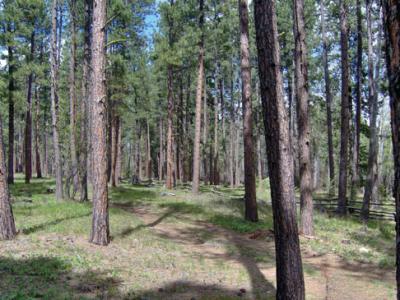
Both the Forest Service and the Bureau of Land Management —the agencies that manage almost all of the West’s federal land—are required to manage those lands for multiple uses including grazing; forest production; recreation by hikers, hunters, horseback riders, and motorized vehicles; wildlife habitat and clean water. Agency managers have found—sometimes through hard luck mistakes, but also through almost a century of forest research—that the only way to balance these sometimes conflicting uses is to manage for a sustainable, healthy forest.
“A healthy forest means different things to different people,” says Matt Arno, head forester for Woodland Restoration, a Missoula-area based company that specializes in ecologically-based, low-impact forest management. “And it depends on the ecosystem. Elevation, aspect, and slope contribute to how a healthy forest looks.”
Tim Love, District Ranger for the Seeley Lake District of the Forest Service, agrees that variability is the key to healthy sustainability. “We look for a stand that is proceeding through different stages of the life cycle, and that life cycle depends on the species. We like to see mixed age classes, mixed species and mixed size classes,” he says.
“A healthy forest is one that maintains its ability to support the entire life cycle of the tree species native to that locale,” says Peter Kolb, Montana State University Extension Forestry Specialist. “A landscape that is entirely composed of smaller, young trees would be considered unhealthy just like a landscape comprised of only very old, large trees.”
Kolb compares forests to cities, citing a forest with only old trees is like a city with only people over 70 years old while a forest with only young trees is comparable to a city of only children—neither is viable over the long run.
“Also, if a forest has 30% or more trees afflicted by a pest or pathogen it may be considered unhealthy,” Kolb adds.
Yet the exception proves the rule. Sometimes insects or disease might help a forest stand move along its life cycle.
“A lodgepole pine forest, for example, goes through cycles where many or most of the mature trees die and predispose the forest to burn. Fire, in turn, helps the species regenerate,” Kolb says.
A variety of tree ages reduces the risk of a massive disease outbreak. For example, Douglas fir bark beetles prefer older, mature trees and will not attack younger or intermediate sized trees. Mountain pine beetles like older lodgepole pine and crowded, pole-sized ponderosa pine, though it will attack and kill older trees, too. Trees smaller than four inches in diameter will rarely be attacked.
“Each species (of insect) has a specific host so in pure timber stands those insects can grow to epidemic proportions,” Ranger Love says. “Mountain pine beetles in lodgepole stands in the interior West are at an epidemic.”
Various age classes also allow the species to adapt to a variety of climatic and physical conditions.
“Newly germinating seedlings are very vulnerable to drought, predation, and fungal infection. Perhaps one out of 1,000 or 10,000 seedlings survives,” Kolb says. “That surviving seedling may have just been lucky by germinating on a good site, or it may have the genetics that allowed it to survive. Seedlings from each climatic cycle carry with them the genetic preferences that gave them the edge to survive.”
A variety of age classes and species become the foundation for other forest functions, including clean water and wildlife habitat.
“From an ecosystem health perspective, each age class and species of trees has a variety of other organisms associated with it. Some birds will only nest in grassy openings, others only in dense younger trees, while yet others need the cavities of older rotten trees. Birds are only one example out the thousands, if not millions, of bacteria, fungi, lichens, mosses, plants, and animals that associate their lives around trees life cycles,” says Kolb.
Old Growth Joan of Arc
Researchers, along with both private and public forest managers, tend to agree on how healthy forests look. The question becomes should humans try to maintain a particular state of a forest or allow the dynamic, natural life cycle to progress? Or, possibly, a balance between the two extremes?
“Nature is not a benign governing spirit that keeps the balance; it is a series of processes that operates on an often cataclysmic scale. Historically, wildfires would wipe a landscape clean of trees much like a sponge wipes off a slate. Over centuries or millennia, whatever could grow back would,” says Kolb.
Humans have interrupted the natural fire cycle, says Arno, who also advises small woodland owners in the Forest Stewardship Program. Yet maintaining healthy forests requires managers to either reintroduce those fire cycles or mimic them with other tools.
“Now that we’ve let fuels build up for more than 100 years —both live and dead fuels—when they catch on fire, it’s an inferno,” says the University of Montana resource conservation graduate. “It’s the difference between a campfire and a bon-fire.”
The campfires that Arno speaks of are the frequent, lower-temperature fires that clear the duff and maintain various tree populations, but leave old trees that will produce seeds. The infernos take the old growth, too.
“With all that fuel surrounding those old trees, it’s like burning them at the stake,” Arno says.
Painting the Picture of Health
Whether caused by fire, insects, or any other vector, American politics, economics. and social values demand that landscape-scale deforestation desist. Fortunately, forest managers have the tools to interrupt natural processes by substituting more socially acceptable tools on smaller areas.
First, managers need to assess an area’s tree density, age classes, and species diversity, as well as climatic trend, Kolb says. Only then will they have the information they need to plan for long term survival and growth.
“Across Montana, most management practices focus on two issues: stimulating regeneration of a particular conifer species and manipulating tree densities to increase soil water supplies to remaining trees,” says the Fulbright Scholar who will travel to Germany next spring. “Water is the most limiting environmental factor. To stimulate tree regeneration, site preparation that provides a moist mineral soil seed bed and limits competition for soil moisture by forbs and grasses is critical.”
Tree seedlings germinate best in bare soil. Using fire to scarify the soil often is too risky so foresters use logging machinery and debris clean-up to prepare a site. Once seedlings are established, thinning allows the remaining trees to absorb more sunlight and collect more soil moisture.
Once a forest has been established, practices such as thinning, fuel reduction, and regeneration harvests conducted on a landscape level can help contain wildfires and insect outbreaks, and improve species and age class diversity.
“And the other important factor is that these practices can be conducted in a way that not only improves the resilience of western forests to extreme events, but they can be conducted in a manner that is economically profitable and that provides raw materials for human use,” Kolb says.
With Woodland Restoration, Matt Arno, his brother, Nathan, and their business partner, Bert Nilson, focus on what they leave in a forest instead of concentrating on “the take.”
“We want to leave the biggest, healthiest trees and remove the smaller stuff,” Matt says. “We try hard not to do too much damage to the soil or scar the residual trees.”
The Arno brothers spend a lot of time with their clients, evaluating the forest and meeting the client’s goals.
“Often, we’ll leave the timber relatively dense because, many times, a forest has been allowed to grow dense for a long time. To open it up all at once is hard on the trees,” he says.
Modern Machinery Does Little Damage
Fifty years ago, a logged clearcut stuck out like a sore thumb from miles away, labeling timber harvest and the loggers themselves the reputation for nothing less than land abuse. Chainsaws, bulldozers, and heavy chains in the summertime left bare earth to run into downhill creeks with the next rain storm.
Today, loggers use less invasive techniques and machinery with a lighter footprint to get the job done.
“The new forwarders distribute weight per square inch to less than a person standing on the same ground,” says Love. “And the Forest Service does a lot more wintertime harvesting on snow or frozen ground so we’re not causing near the disturbance.”
Matt Arno uses rubber tires on his machines, cuts logs to length to avoid skidding them to a deck, and usually chips or hauls the leftover fuels.
“We do some piling and burning, but not much. We try to think of fuels as a major part of the harvest plan,” Arno says. “It’s definitely more difficult to chip or haul away those fuels, but our culture has not embraced burning as a management tool.”
“Like anything, we’ve learned so much in the last 50 years. And equipment has changed and practices have changed,” Love says.
When fire strikes land managed by the Forest Service, rangers are authorized to suppress the fire, rehabilitate the fire lines —often bulldozers and other equipment have bared the ground, creating an immediate erosion hazard and near-future noxious weed bed—and then rehabilitate the burned acres. In 1991, the Forest Service spent 13 percent of its total budget on wildland fire management. Last year, 45 percent of the agency’s budget went to fighting fire. Three 2007 Rocky Mountain Front fires alone cost almost $40 million to control.
But before they attempt to salvage any timber, the Forest Service asks for public input.
“We go through an analysis process, an evaluation process, and an appeal process. We should do that and we need to do that. We want to do that, but it slows us down in responding,” says Love, who has been the Seeley District Ranger since 1995.
Often, those processes take several years, but burned timber has a short window of value. Pine and spruce that blanket much of western Montana hold commercial value for only about two years before the wood dries and cracks.
The public comment process is vital to federal land management, but taxpayers should understand the price they pay, says Love. “Taxpayers pay for the analysis and responding to the appeals and then the litigation that follows, all while the value of the wood is declining,” he says. “It’s an investment.”
Not Smokey’s Inferno
While many point to Smokey the Bear’s influence on fire suppression, forest researcher Kolb says other factors have affected Montana’s forest fuel loads.
Normal climatic cycles become the first instigator.
“Records verify that our climate is constantly changing between cool and warm trends and dry and wet trends. Forests respond to these trends by showing bursts of tremendous growth and regeneration when a wet trend occurs and bursts of large scale mortality when dry or hot trends occur,” Kolb says.
The 1930s and 1940s brought production limitations at the same time that building materials were in short supply. The climatic conditions that helped create the dust-bowl era also left western forests drought stressed so wildfires burned across vast landscapes. Farmers, ranchers, miners, and loggers across the West lost their livelihoods and, sometimes, their lives.
Those catastrophes sparked the concept of Smokey the Bear in the 1940s, and then a tiny cub rescued from a burned tree after a 1950 New Mexico fire was adopted as the live Forest Service mascot for reducing forest fires.
Since the 1940s, active suppression of wildfires coupled with a cool, wet climatic trend resulted in fewer wildfires and tremendous tree regeneration and growth. Until the last few, dry years.
“Historical tree ring and fire scar analyses show that western forests cycled like this for at least the last 1,000 years,” Kolb says. “You have to think of the entire western forests as growing and shrinking to climatic trends. This is the evolutionary process that created the diverse forests we currently know.”
Black, White or Shades of Gray?
After so many Montanans spent the summer of ’07 under thick, gray smoke, and some even left their homes for safer locales, the consequences of wildfires might seem black and white.
Not so, says Peter Kolb, Montana State University Extension Forestry Specialist.
Fire affects forest species differently, and different types of fires might be good or bad for each species. Society tends to view all burned areas as ugly, but forests have adapted to the good and bad with long-standing ecosystem lifecycles.
Forest fires can be beneficial or detrimental, depending on how and when they burn.
Hot, stand-replacing fires that burn through a forest that evolved with frequent, lower-temperature fires will leave open, grassy meadows. Deer, elk, grizzlies, and many species of birds are among those that migrate straight to this newly-created dessert plate.
And fire speeds the breakdown of nutrients into a form that plants can use more readily, unless severe heat volatilizes nutrients and changes the soil surface structure to create poor growing conditions.
Besides releasing helpful nutrients, fire reduces unfavorable soil chemicals.
“Research has shown that fires may be essential to help break down specific plant organic compounds such as waxes, phenolics, and terpenes that build up in the soil over time and detrimentally impact specific plants and microorganisms that help a forest function. Charcoal deposited into the soil surface also acts much like a purifier, absorbing plant toxins and facilitating the exchange of plant essential nutrients,” says Kolb.
On the other hand, heat applied for long periods to the soil—such as a smoldering duff fire – or intense heat from large amounts of burning debris will kill plant roots and seeds in the soil. Native vegetation will recover more slowly —or sometimes not at all because erosion removes the soil and noxious weeds invade before the native trees, shrubs and grasses can germinate.

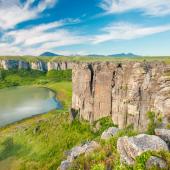

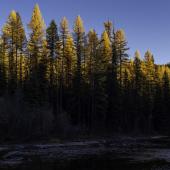
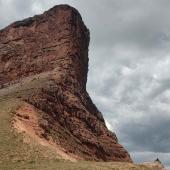



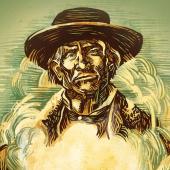
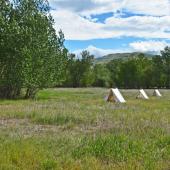
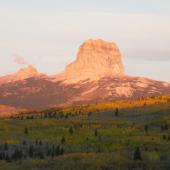
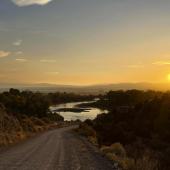
Leave a Comment Here